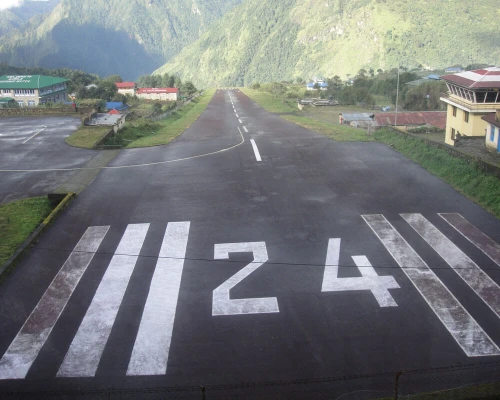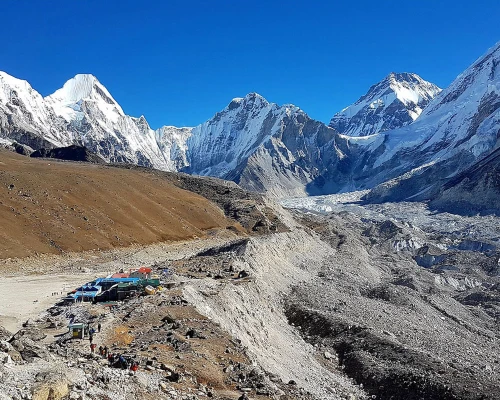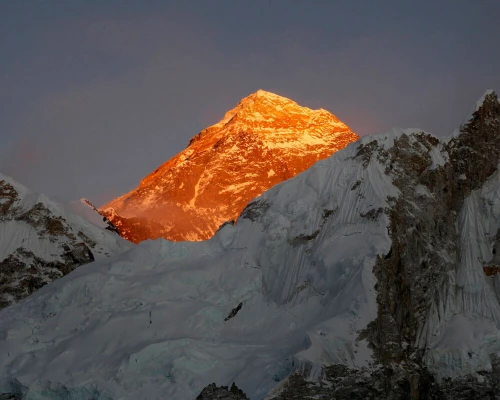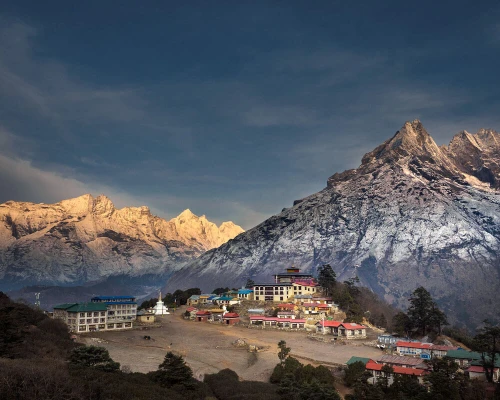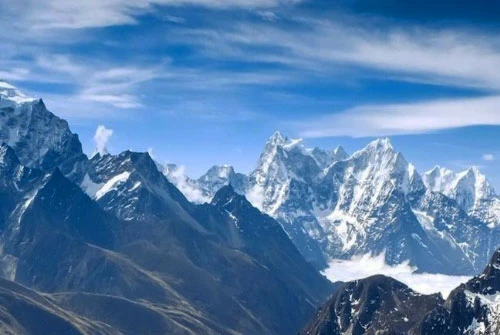High-Altitude Sickness and Prevention Tips for Everest Trekkers
Altitude sickness Categories
Depending on elevation, altitude sickness is divided into three major types they are:
High altitude ( 1,500m - 3,500m )
At an altitude of 1,500m to 3,500 m, most of your physical symptoms can be seen in the respiratory function of your body. A lower oxygen pressure problem can be seen at this level, where your arterial oxygen saturation (Sa02) remains above 90% and your oxygen is transported to the body. Normally, your body reacts quickly when you go to an altitude of 2,400 feet.
Very High altitude ( 3,500m-5,500m )
Everest Base Camp lies at a very high altitude. Where your body's arterial PO2 drops below 60 mmHg at this elevation and your oxygen saturation level falls below 90% Hypoxemia may be caused at this altitude. You might have problems sleeping. While you are at a height of 3,500m to 5,500 m, you might feel a respiration problem while you are at a very high altitude.
Extreme altitude ( 5,500- above )
Till now, no human habitat has been found above the height of 6,000 meters, and the respiration process in this region is normal. Several physical problems like hypoxemia, hypocapnia, and alkalosis may occur at this altitude. There is a maximum risk of fatality at this altitude due to the low supply of oxygen. Mountaineers and trekkers used to carry their supplemental oxygen.
Types of Altitude Sickness
There are many types of altitude sickness, but in Everest Region Trek, you may have a chance of getting three types, as given below.
Acute mountain sickness (AMS)
Acute mountain sickness is majorly divided into 3 types; mild, moderate, and severe. Mild stands for common symptoms like headache, fatigue, dizziness, and nausea, and you may feel a loss of appetite too. It’s not life-threatening.
Moderate is the way to get worse. You may feel vomiting, a severe headache, and fast respiration. In severe cases, your body gets totally weak, your body becomes unconscious, and fatalities may occur.
High Altitude Pulmonary Edema (at 3,200m and above)
HAPE happens when fluid builds up in the lungs and makes it very hard to breathe. Some of the signs are extreme shortness of breath, a cough that won't go away, tiredness, and lips and skin that look blue. HAPE is life-threatening and needs to be brought down to a lower elevation and treated right away.
High Altitude Cerebral Edema (at 4,300m and above)
HACE is a very bad type of altitude sickness that affects the brain. As a result, you may feel confused and disoriented, lose your balance, get strong headaches, have dreams, or have your awareness change. As a medical emergency, HACE needs to be lowered right away, and medical help must be given.
Symptoms of Altitude Sickness
Many trekkers ask, Does altitude sickness or acute mountain sickness affect everyone?
Altitude sickness is an unpleasant behavior. It can affect anyone who belongs to any age group, gender, or has any kind of physique. Acute mountain sickness doesn’t do any harm to anyone. It is different for every individual when you are at a height of 5,000 meters.
Tips to Prevent Altitude Sickness For Everest Trekkers
Stay hydrated: First of all, in the case of altitude sickness, being hydrated is the major tip. Your body should be hydrated, and you should avoid those things that will cause dehydration.
Acclimate slowly: If you travel to a higher altitude yourself, your body gets less oxygen than at normal altitude. As per research, your body needs some time to change your oxygen level. So plan your trek itinerary with an acclimatization period to give your body time to adapt.
Avoid Rapid Ascent: You might have heard slow and steady wins the race. Just trekking to Everest base camp as fast as you can may lead to altitude sickness, so doing it slowly may help you reach Everest base camp without Acute mountain sickness.
Medication: Medications like acetazolamide, also called Diamox, are good preventive options before trekking, and by chance, if you suffer from altitude sickness, dexamethasone should have to be carried out for treatment.
Travel with a guide: Traveling with a guide might be the best tip for those trekkers who are not aware of the Everest Base Camp Trek. Hiring experienced guides who are aware of the Everest region can monitor you and your health. Licensed guides are trained and much more familiar with safety protocols during the trek.
Avoid Alcohol and Caffeine: Limit alcohol and caffeine consumption, as they can contribute to dehydration and exacerbate symptoms.
Proper Nutrition: Maintain a balanced diet with adequate carbohydrates and calories to provide energy for your body at high altitudes.
Rest: Get plenty of rest and sleep to help your body adapt.
Avoid smoking: Smoking can reduce the amount of oxygen in your bloodstream, making altitude sickness worse.
And lastly, you should consume a healthy diet before and during the trek. Nutritional supplements would help you give an energetic feel to your body, and having high carbs and light amounts of protein, or Dal Bhaat in Nepal, can give you the best feel while you are trekking.
Treatment
Descend: If you or someone in your group experiences severe altitude sickness symptoms, the most effective treatment is to descend to a lower altitude immediately. Descending to a lower elevation can rapidly alleviate symptoms.
Supplemental Oxygen: Oxygen can be provided through portable oxygen cylinders or concentrators to relieve symptoms. Many trekking agencies and lodges in the Everest region have access to supplemental oxygen.
Medication: Medications such as acetazolamide (Diamox) can help prevent and alleviate altitude sickness symptoms. Consult with a doctor before starting any medication, and be aware of potential side effects.
Rest and Hydration: Rest in a lower-altitude location and drink plenty of fluids. Rehydration can help alleviate symptoms.
Pain Relievers: Over-the-counter pain relievers like ibuprofen or aspirin can help with headaches associated with altitude sickness.
Dexamethasone: In severe cases, a prescription medication like dexamethasone may be administered to reduce brain swelling and inflammation. This should only be done under the guidance of a medical professional.
Gamow Bag: A portable hyperbaric chamber known as a Gamow bag can simulate lower altitudes and may provide temporary relief from severe symptoms while descending.
Emergency Evacuation: In life-threatening situations, arrange for an emergency helicopter evacuation to a lower altitude and seek immediate medical attention.
Suggestions for trekkers
It is necessary for those who want to trek. You should be aware of the symptoms, risk factors, and preventive measures of altitude sickness to avoid the fatal effects of AMS. High-altitude sickness is a real risk for people who want to climb Everest, but if you prepare well and follow these tips, you can cut that risk by a lot. Keep in mind that your safety should always be the most important thing on your trip to the top of the world.
So, get ready, stay safe, and enjoy Everest's amazing beauty!




